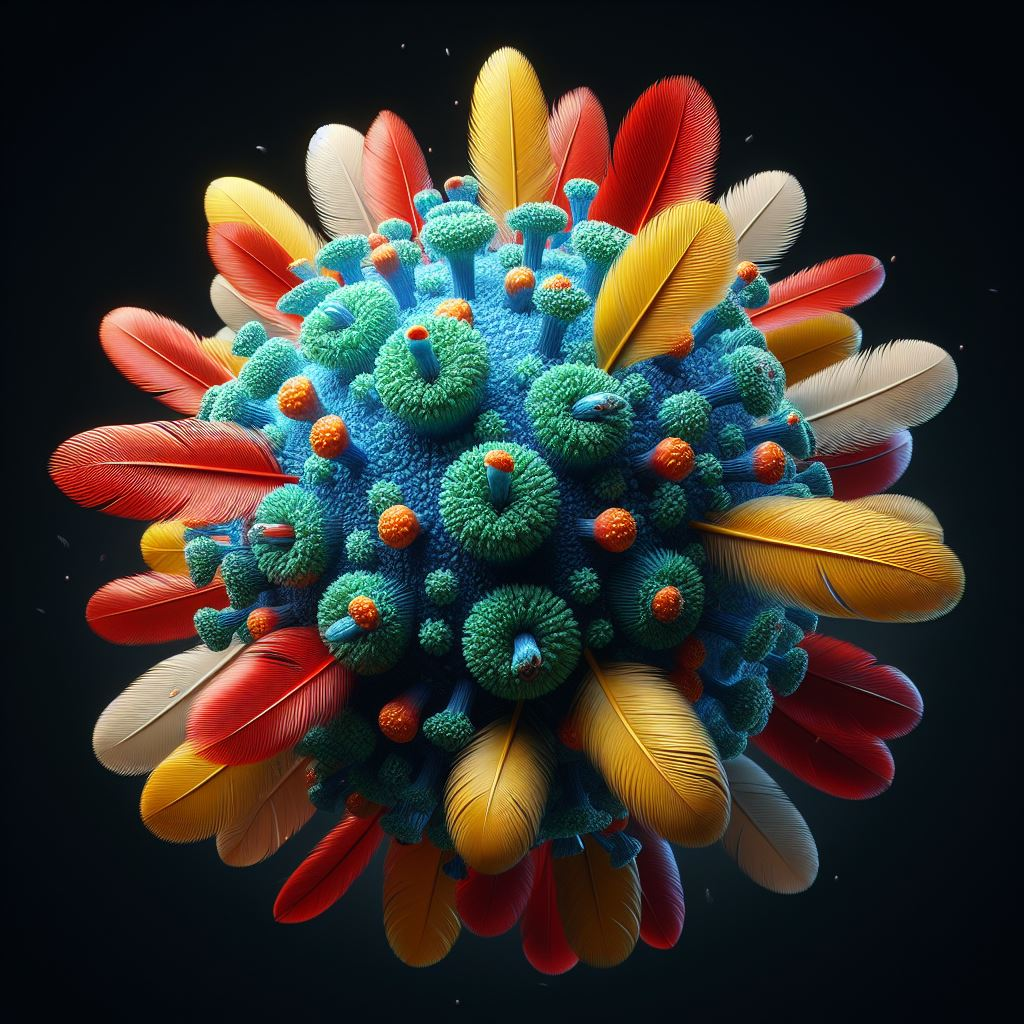The influenza virus, commonly known as the flu, is a highly contagious respiratory infection that affects humans and animals
Influenza is an infectious viral illness. The name “influenza” originated in 15th-century Italy, from an epidemic attributed to “the influence of the stars. The influenza virus, commonly known as the flu, is a highly contagious respiratory infection that affects humans and animals. Influenza is a single-stranded, helical-shaped RNA virus of the Orthomyxoviridae family.
Three types of influenza affect poultry: influenza types A, B, C, and D. Avian influenza, commonly known as bird flu, is a viral infection that primarily affects birds, including domestic poultry and wild birds. Some strains of avian influenza can also infect humans, leading to varying degrees of illness. The H5N1 subtype, for example, has been associated with severe human cases.
Types of Influenza Viruses:
Influenza Type A:
Influenza type A viruses may infect both humans and some poultry. Influenza type A is most popular in avians, causing disease, and this type is considered more dangerous.
Within type A influenza viruses, certain subtypes are particularly concerning. This type is associated with severe illness in humans and causes a high mortality rate. These subtypes are often referred to as “highly pathogenic avian influenza.”
Influenza Type B:
Influenza type B generally infects humans, but at least two reports have documented influenza B in seals. This type primarily infects humans and causes the seasonal flu. It undergoes antigenic changes less frequently than Type A and is not classified into subtypes.
Influenza Type C:
Humans are the only known reservoir of influenza type C, but symptoms are generally milder compared to types A, B, and D. Influenza C viruses are not associated with seasonal epidemics and pandemics.
Influenza Type D:
This type mainly affects cattle, and it is not known to infect humans frequently.
| A Subtypes Avian (can infect humans) H5N1 H7N3 H7N7 H7N9 H9N2 H10N8 Swine (can infect humans) H1N1 H1N2 H3N2 Most common human H1N1 H3N2 | HPAI vs. LPAI HPAI H5N1 LPAI H5N1 HPAI H5N8 LPAI H5N8 Subtypes Can be classified as high path or low path based on the ability of the specific virus strain to kill chickens in a lab setting. | |
| Influenza B (mainly infects humans) | |||
| Influenza C (infects humans and pigs, but is rarer than types A and B.) | |||
| Influenza D (Infects cattle) |
Epidemiology:
Avian influenza’s epidemiology involves the study of how the virus spreads and affects populations. It predominantly circulates among birds, especially waterfowl, and can be classified into low-pathogenic (LPAI) and highly pathogenic (HPAI) forms based on the severity of illness in birds.
Transmission to humans is rare but can occur, often through direct contact with infected birds or their secretions. Certain subtypes, such as H5N1, have raised concerns due to their potential for severe human infections. Monitoring and surveillance in both bird and human populations are essential to tracking and controlling outbreaks.
Transmission:
Avian influenza, or bird flu, primarily spreads among birds through direct contact with infected birds, their saliva, nasal secretions, and feces.
Humans can contract it through close contact with infected birds or their environments. In rare cases, human-to-human transmission has occurred, usually in close household settings. Staying vigilant about hygiene and avoiding contact with sick birds are crucial preventive measures.
Pathogenesis:
Following respiratory transmission, the virus attaches to and penetrates respiratory epithelial cells in the trachea and bronchi. The pathogenesis of Avian Influenza involves the entry of the virus into the respiratory and gastrointestinal tracts of birds.
The virus binds to host cells using specific surface proteins. Once inside the cells, it replicates and spreads, causing damage to the respiratory and digestive systems. Highly pathogenic Avian Influenza (HPAI) strains can lead to severe disease, affecting multiple organs and often resulting in high mortality rates.
Diagnosis:
Diagnosis is done by clinical symptoms, laboratory tests, postmortem examination, and field investigation. Some laboratory tests are performed, which are given below:
Molecular assays (i.e., rapid molecular assays, reverse transcription polymerase chain reaction (RT-PCR), and other nucleic acid amplification tests).
• Antigen detection tests (i.e., rapid influenza diagnostic tests and immunofluorescence assays).
Signs and Symptoms:
The onset of influenza symptoms is sudden. Respiratory symptoms generally include cough, sore throat, congested eyes, stuffy or runny nose, respiratory distress, swelling of the head, a drop in egg production, and sudden death.
Treatment:
There is no specific antiviral treatment for avian influenza in birds. Infected birds are often culled to prevent their spread. In humans, antiviral medications like oseltamivir, aspirin, and acetaminophen may be used, but early intervention is crucial. People at high risk with severe symptoms should be treated with antiviral medications.
Prevention and Control:
Influenza virus control and prevention involve vaccination, practicing good hygiene (like hand washing), strict biosecurity practices on poultry farms, culling infected birds, avoiding close contact with sick individuals, and, in some cases, antiviral medications. It also includes proper hygiene, avoidance, respiratory etiquette, a clean environment, a healthy lifestyle, staying informed, and public awareness.
Vaccination:
Vaccination is a key preventive measure that helps reduce the severity of disease and limits its spread. Several inactivated, recombinant, and live-attenuated vaccines are used. Inactivated vaccines are available as a nasal spray. Commonly used brands include Nobilis Influenza H5N1, Vaxxitek H5N1, and others.
This article is jointly authored by Ambreen Noor and Muhammad Hamza from the University of Veterinary and Animal Sciences Lahore, sub-campus Jhang.
